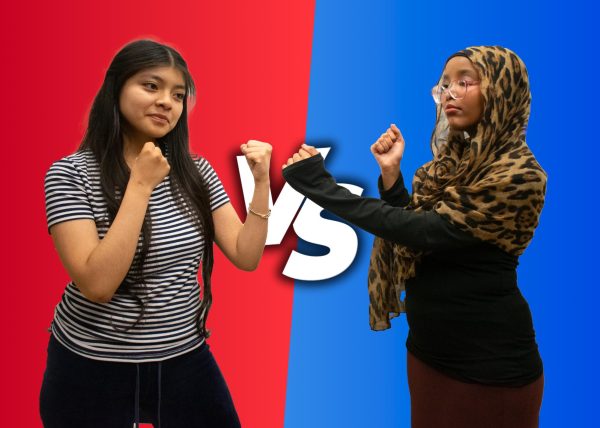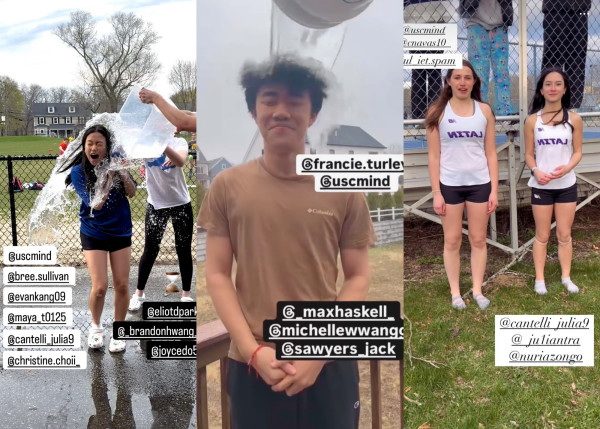The Trend of Conforming Youth
With the rise of influencer culture across all social media platforms, teenagers are beginning to look and act more like each other with every passing generation. Every day, social media and influencers bombard teens with information about how they are supposed to dress or act and what music, foods or brands to like. Ultimately, evolving one’s lifestyle to adhere to these trends molds teenagers into the same people with the same interests and opinions, leading Generation Z to lack individuality as a whole.
Teenagers are especially susceptible to influencer culture and rapid trend cycles, as they are the most receptive to peer influence and pressure. This anxiety and need to belong fuels the never-ending cycle of trends seen on popular social platforms such as TikTok, Instagram and Pinterest.
Over the past year, trends have spanned from students stealing school items to collectively “canceling” public figures such as Billie Eilish and Charli D’Amelio. These seemingly absurd “trends” go full-circle, appearing on several platforms until they have captured the attention of every teenager. So, why do teens follow absurd trends without thinking critically?
Boston Latin School history teacher Mr. Andy Zou reflects, “Teens have always been impressionable, but with social media, they are now constantly being bombarded by current trends and influencer culture. It’s hard to really turn away because each teenager and their social circles are all connected by social media.”
As teenagers are developing interests and hobbies, they are especially susceptible to peer pressure and a desire for belonging, which makes these trends throughout social media especially appealing.
The rise of TikTok has given trends a larger platform to reach a wider group of audiences more effectively. TikTok’s algorithm is made to push certain trends repeatedly — whether it be the same songs, videos or creators. Seeing these trends appear repeatedly can lead to the assumption that they are more popular or desirable than they actually are. The more one is aware of something, the more likely one is to want it.
This phenomenon is known as the Baader-Meinhof phenomenon or the Frequency Illusion, which explains how the repetition of an ad can cause people to desire the advertised product. Especially at a time when social media influencers are becoming further integrated into marketing, targeted ads and the Frequency Illusion are becoming increasingly effective, slowly causing teenagers to want to buy the same products they see on their favorite influencer.
Christina Zhu (I) reflects, “I feel like TikTok does a lot less of molding people into the same personality because the ‘For You’ page’s algorithm is based on content that you normally interact with. […] Sometimes, there are videos that become trends that everyone sees, like using certain slang or an audio that’s really catchy, and everyone starts saying those phrases for a couple of weeks or [even] months, which does create people that have similar personalities.”
It is not, however, just clothing brands and catchy songs that circulate the internet. David Rivkin (II) warns, “Influencer culture can be extremely toxic at times, when there is a certain ideal being pushed, especially towards a younger and more impressionable audience. There can be a lot of issues with body image and other things that harm self-confidence.”
In particular, TikTok trends such as the “BBL” and “body checking” force unrealistic beauty standards onto unsuspecting minors, causing them to aim for an impossible goal of looking like the influencers they see.
Trends and influencer culture are especially appealing to the younger generation, as they are being taught from a young age that they must conform to pop culture in order to be liked. Rivkin continues, “I think it is healthy to follow influencer culture as long as you understand that the internet is not always an accurate representation of peoples’ actual lives, and you shouldn’t do something simply because a lot of people are, if it’s not right for you.”
Not only are teenagers starting to look increasingly similar to one another, but they are also starting to appear older and more mature with each passing age group, blurring the line of identifiable age. This is a cyclical trend that marketers call “KGOY”: “kids getting older, younger,” which describes younger children wanting to appear more mature and adopting the media that older audiences typically consume.
Ultimately, the phenomenon of influencer culture has afforded advertisers and creators a method to connect with young audiences. These uncharted territories, however, also bring a generation that is declining in creativity.
Generation Z has become a generation that is image-obsessed, wanting to be seen and heard, but simultaneously wanting to belong. Going forward, influencers and teenagers alike should embrace the uniqueness in everyone and build off of one another’s ideas and opinions. The prevalence of influencer culture should not come at the expense of dampening individuality.







